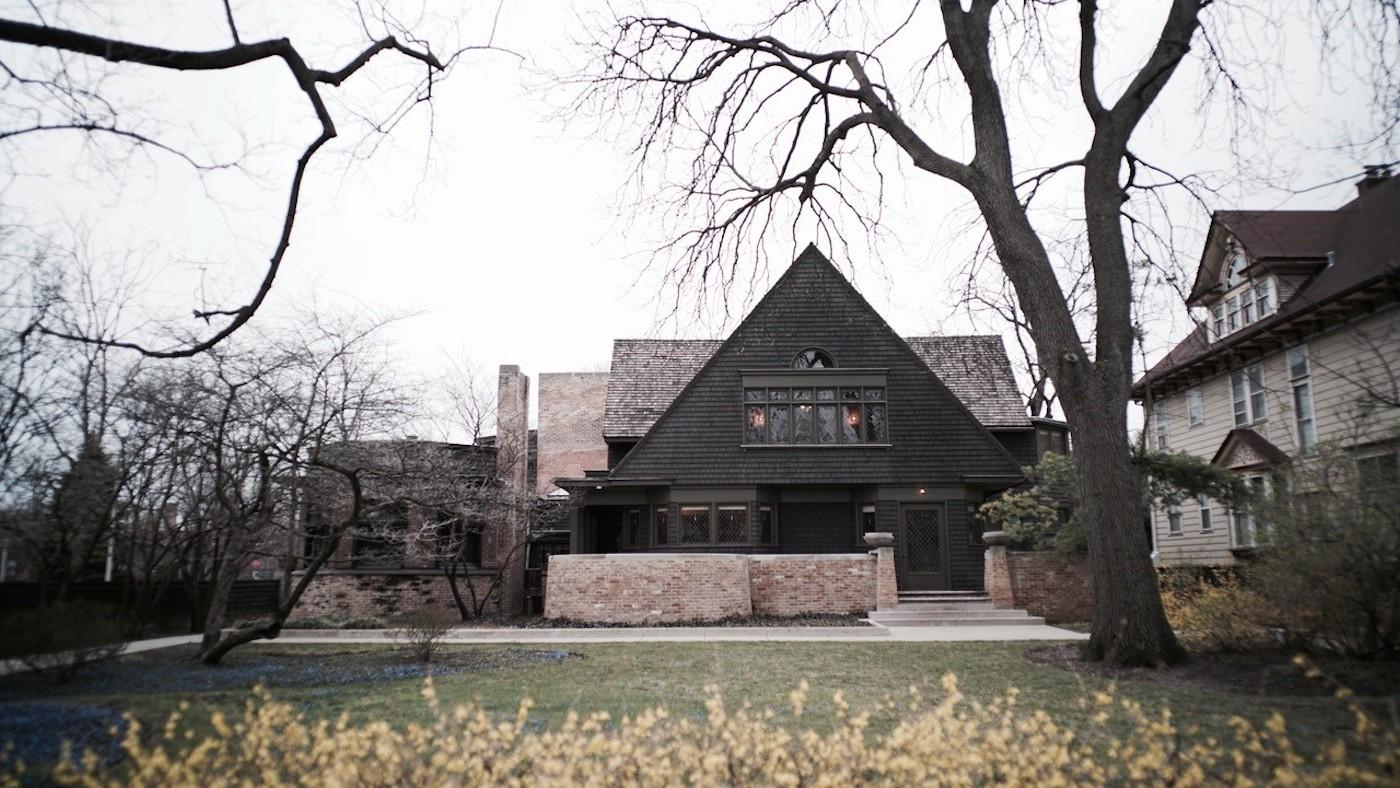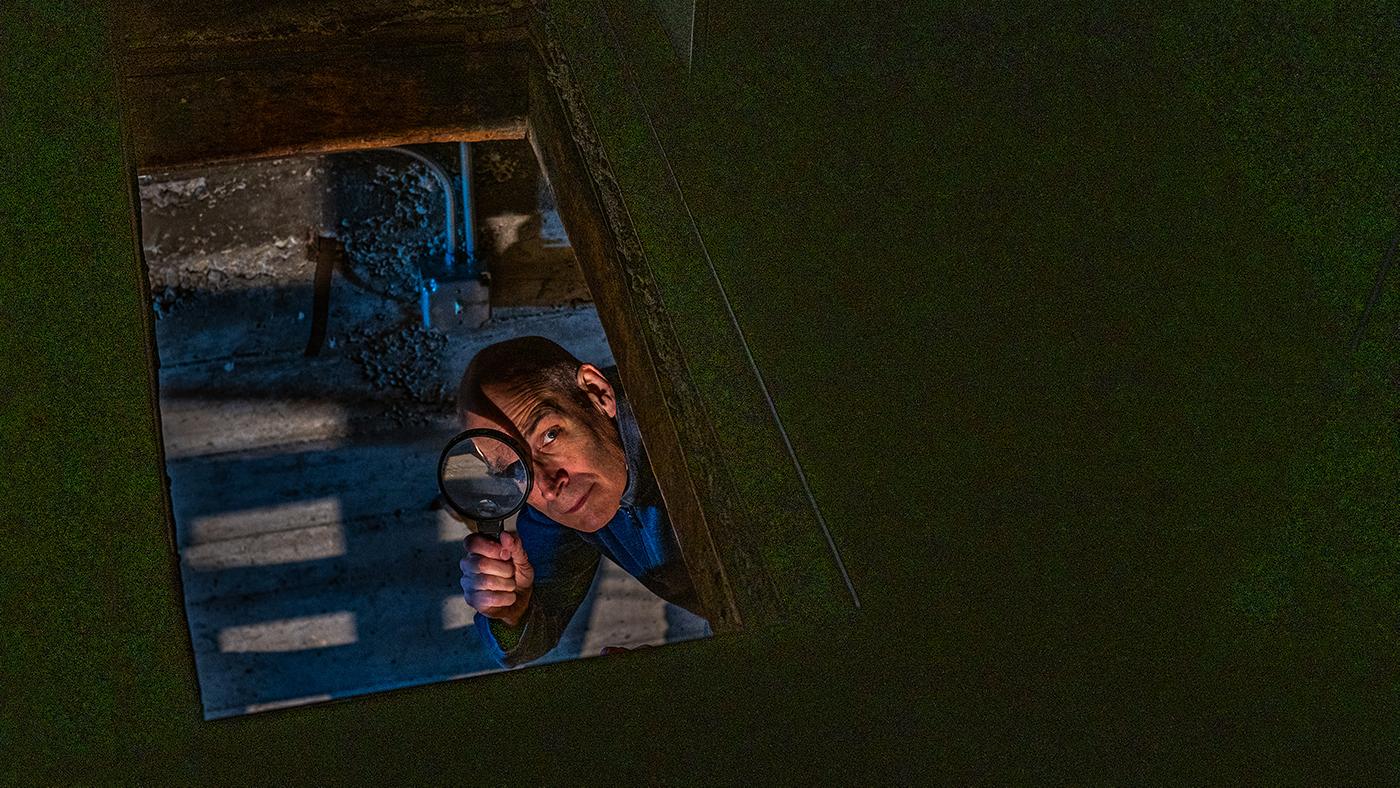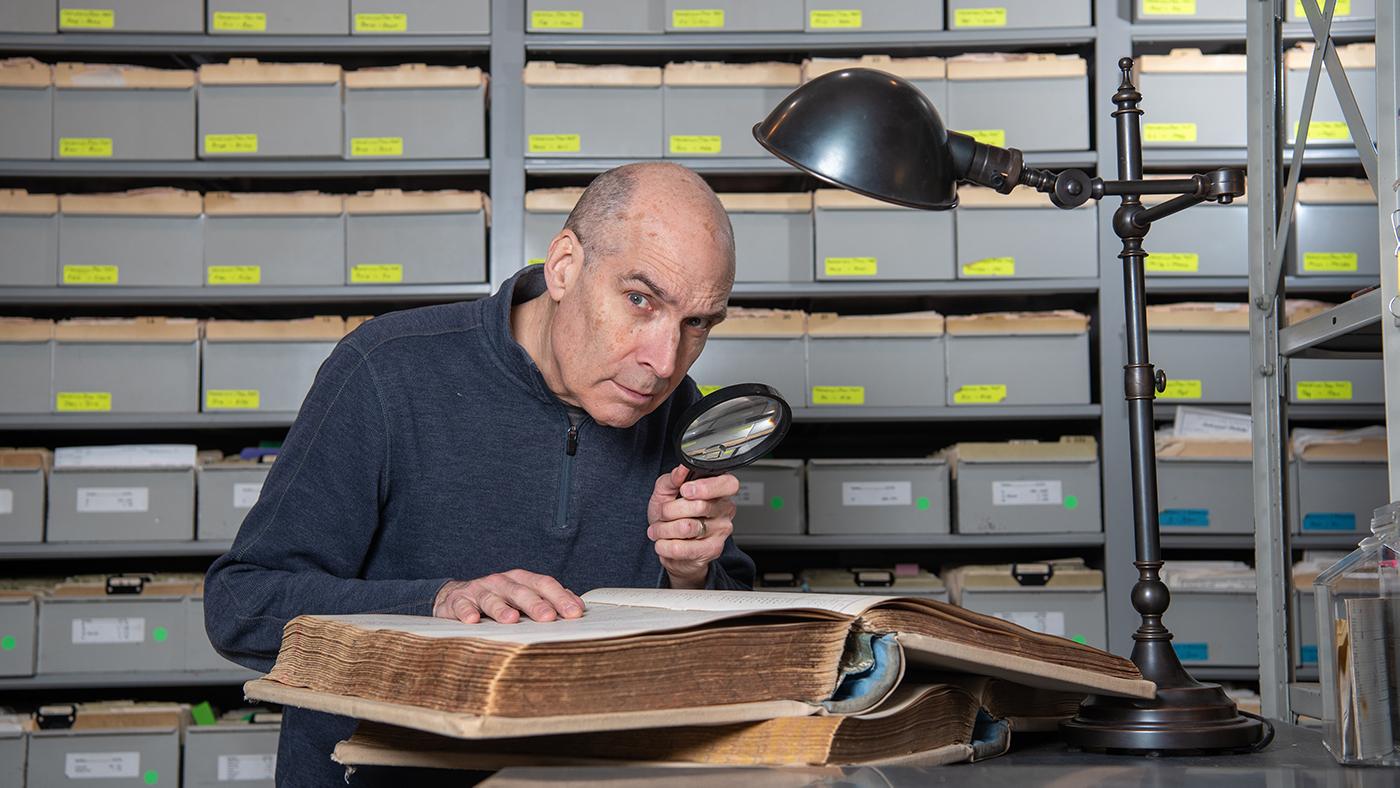Frank Lloyd Wright's Little-Explored Welsh Roots and His Green Architecture
Daniel Hautzinger
December 22, 2022

Frank Lloyd Wright: The Man Who Built America airs on WTTW on Monday, December 26 at 9:00 pm and is available to stream by WTTW Passport members.
Superlatives abound in discussions of Frank Lloyd Wright. Take his Unity Temple just outside of Chicago in Oak Park. It’s a UNESCO World Heritage site, has been called the world’s first modern building, and contains what has been described as one of the most beautiful interior spaces in America.
“If you go there, you’ll come away convinced that he was special, he was a unique architect,” says Jonathan Adams, a Welsh architect and host of the documentary Frank Lloyd Wright: The Man Who Built America. Unity Temple, which was recently restored, is the work of Wright’s that Adams most recommends people see, because it “crystallizes everything that he was about.”
The building, completed in 1908 for a Unitarian Universalist congregation to which Wright’s mother, Anna, belonged, was technologically innovative in its extensive use of reinforced concrete. Its powerfully horizontal orientation is an example of Wright’s Prairie Style. In typical Wright fashion, it compresses space as you enter before suddenly opening into a large room, taking the visitor on a journey. The radical simplicity of the building and lack of a spire or much ornamentation as compared to most historic church architecture is also characteristic of Wright, who sought to create a new American architecture and wanted each of his buildings to perfectly fit their site and purpose: to be unique.
But Unity Temple did not emerge out of nothing, as Wright would have people believe. Adams thinks that a Unitarian chapel in Wales provides the model for two of the building’s most unusual features: the sanctuary’s square shape, and the positioning of the entrances into it on either side of the pastor, so that you are facing the congregation rather than the minister as you enter. Wright’s mother Anna was Welsh and had visited the chapel in her family’s ancestral home shortly before Wright began designing Unity Temple, and presumably brought word of it back to Wright.
“Having visited both buildings…the experience going in is so similar, it’s quite extraordinary,” says Adams. “It’s obvious, having been there, that Unity Temple’s sanctuary is basically a kind of simulacrum of the old temple in Cardiganshire.” Wright also drew on the layout of a medieval chapel that he had visited in Japan when designing Unity Temple, according to Adams. “That’s his real genius, I think, is his ability to take ideas from all these really odd, heterodox sources.”
Unity Temple is not the only part of Wright’s life or work that shows the influence of his Welsh family, Adams believes. Adams traces that influence in a new book, Frank Lloyd Wright: The Architecture of Defiance, which will be published in the United States in January, 2023 by University of Chicago Press. The book grew out of the documentary.
Taliesin, the home and studio Wright built near Spring Green, Wisconsin is the most obvious example of Welsh influence. Not only is its name Welsh for “shining brow,” referring to its location on a hill; Taliesin was also the name of a sixth century Welsh poet whose work had been revived by the eighteenth century Welsh poet and scholar Iolo Morganwg, whom Anna’s family knew back in Wales. (Morganwg was eventually found to have forged some of the ancient literature he claimed to have rediscovered.) Morganwg’s famed motto, “Truth against the world,” both encapsulates Wright’s radical philosophy and is represented throughout Taliesin in its symbolic form of three lines.
Taliesin is located in the area of Wisconsin in which Wright’s maternal family settled after emigrating from Wales, where Wright was born and spent long summers as a child. His first known work as an architect was a Unity Chapel in the area for his Unitarian minister uncle; Wright was a teenage employee of the Chicago architect in charge of designing the chapel.
Unitarians teach that God is in all things, and Adams believes that the proud Unitarianism of Wright’s maternal family helped inculcate a love of nature in Wright. The American architect espoused an “organic architecture,” in which a building fits into the landscape in which it sits, using local materials and complementing the surroundings. The concept is most famously demonstrated at Fallingwater in Pennsylvania, which is designed over a waterfall and integrates boulders and rocks from the site.
Such an attention to a building’s impact on the natural world makes Wright seem contemporary even today, in a time of green architecture. His use of local materials, a notion of the coexistence of nature and architecture, a focus on natural light, and a flowing sense within a home that can create a similar feel to an open floor plan are all common goals of contemporary architecture.
“There is no question we’re coming back to looking very hard at the sorts of approaches to architecture within the environment that Frank Lloyd Wright was advocating a century ago and all the way through his career,” says Adams. Wright even designed a home in Madison, Wisconsin that could be considered a “passive solar house,” designed to maximize natural heating and cooling; Wright’s is a south-facing curve set into an earth bank that he called a “solar hemicycle.”
Wright’s reverence for nature was so great that would even build around standing trees, including at Fallingwater and his own house and studio in Oak Park. “Later in his life he used to say, ‘I believe in God, only I spell it Nature,’” Adams says. “It’s that attitude to the sanctity of nature which you’re beginning to see come back into architectural thinking.”
Wright’s Oak Park home and studio, as well as the Unity Temple, date from an early part of his career during which he designed numerous homes in Oak Park and in and around Chicago, including the Robie House in Hyde Park, another UNESCO World Heritage site. “That was the most significant period of his architecture in terms of pushing the frontiers, being so far ahead of everyone else in world architecture,” Adams says.
And yet, despite the relentless focus on innovation, Wright also still had an eye for simple beauty. “He was interested in visual impact and visual beauty, and the rightness of things in relation to their context, whether it was an urban context or a natural context,” Adams says. “That’s why I think his work appeals so much to non-specialists, [people outside architecture]: it’s tremendously appealing, inside and out. They are beautiful buildings, beautifully made, particularly the old ones, the ones in Chicago.”







